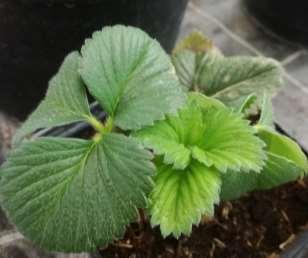
1 minute read
macularis
Background
A forecast model for powdery mildew, which is one of the most important pathogens affecting hops, is currently still in the development and testing phase. For this reason, an indicator plant, i.e., a plant that is much more susceptible to powdery mildew, is of great interest. Once early symptoms of powdery mildew appear on the indicator plant, it is an indicator to consider using targeted spraying to protect the somewhat less susceptible hop plant against powdery mildew. This has a savings potential for pesticides at the beginning of the season. The indicator plants selected for the experiment were strawberries, more specifically, the variety Daroyal, a cultivar susceptible to powdery mildew. Like hops, these strawberries are attacked by Sphaerotheca macularis, specifically by the variety Sphaerotheca macularis f. sp. fragariae.
Method
Strawberry and hop plants were placed next to each other in a greenhouse and spores of Sphaerotheca macularis were seeded there on March 9, 2021. For this, a severely infected carrier plant was taken into the area and the spores were distributed by a leaf blower.
Result
Even after several weeks, the strawberry plants remained symptom-free, while the hop plants showed severe powdery mildew infections. Thus, this greenhouse experiment established that strawberries are not suitable as indicator plants for Sphaerotheca macularis in hops.
Figure 5.5 Hop plant on April 6, 2021 Figure 5.6: Strawberry plant without powdery mildew symptoms










